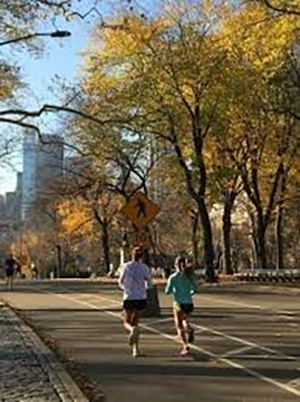As fall approaches and temperatures drop, New Yorkers brace for the seasonal hazards that come with it. The outdoor environment can also become more treacherous for pedestrians. From slick subway stairs to wet sidewalks, slip and fall incidents increase as the season changes. It’s crucial to stay aware of the hazards that autumn brings—and to know what to do if you’re injured due to someone else’s negligence.
Why Autumn in NYC Can Lead to More Slip and Fall Accidents
As leaves fall, rain pours, and temperatures fluctuate, the potential for dangerous surfaces in the city increases. Businesses, property managers, and the City of New York itself have a duty to maintain sidewalks, subway entrances, and public spaces. Failure to do so can lead to serious mishaps.

Some of the most common autumn hazards in NYC include:
- Wet Sidewalks and Subway Entrances
- NYC sees a substantial amount of foot traffic, and during the fall, rain is frequent. Sidewalks, subway stairs, and platforms can become slippery with rainwater, especially when covered in leaves. Public spaces must be maintained to avoid pooling water and slippery conditions that put pedestrians at risk.
- Fallen Leaves on Pavement
- While the changing leaves are beautiful, they can also pose a danger when they fall onto the city’s sidewalks and streets. When wet, these leaves can be as hazardous as ice, particularly in heavily trafficked areas. Property owners are responsible for cleaning up leaves on their sidewalks, but failure to do so can lead to dangerous falls.
- Poorly Lit Areas
- As days get shorter, the sun sets earlier, making it harder for pedestrians to see obstacles in their path. New York City is home to many older buildings and streets that may not have adequate lighting, particularly in less trafficked areas. A lack of proper lighting can lead to trips and falls on uneven pavement or other hazards.
- Construction Zones
- NYC is known for its ever-present construction sites. The fall weather can make these sites even more hazardous, with slick surfaces, poorly marked areas, and loose debris. Pedestrians often have to navigate makeshift walkways that are not always maintained to safety standards, increasing the risk of accidents.
- Early Frost and Freezing Rain
- As fall progresses, the city may experience frost or freezing rain that quickly turns sidewalks into dangerous surfaces. In NYC, property owners must keep sidewalks clear of ice, but delays in removing frost can lead to accidents. Slip and fall injuries are particularly common in early morning hours, when frost has had time to accumulate overnight.
Common Slip and Fall Injuries
Slip and fall incidents can lead to serious injuries. Common injuries include:
- Fractured and Broken Bones
- Head Injuries
- Spinal Cord Injuries
- Soft Tissue Injuries
Liability in NYC Slip and Fall Cases
In New York City, property owners, tenants, and the City itself can be held liable for slip and fall incidents if they fail to maintain safe conditions. Under New York’s premises liability laws, property owners are responsible for ensuring that sidewalks, entryways, and common areas are free from hazards.
To hold a party liable for your injury, you must demonstrate that:
- The property owner, tenant, or responsible party knew or should have known about the hazardous condition.
- The hazard was not addressed or fixed in a reasonable timeframe.
- The unsafe condition directly caused the accident and injury.
New York’s “sidewalk law” (Administrative Code of the City of New York § 7-210) requires property owners to maintain sidewalks abutting their property. Failing to clear leaves, snow, or ice could lead to liability if someone is injured.
How to Protect Yourself from Slip and Fall Hazards
While the responsibility for maintaining safe premises lies with property owners, pedestrians can take a few precautions to minimize risk:
- Be cautious around construction zones: Always watch your step when passing through construction areas and avoid walking on visibly uneven or slippery surfaces.
- Wear appropriate footwear: Shoes with good traction are essential in the fall, especially when navigating subway entrances, sidewalks, or construction sites.
- Stay alert during bad weather: Rain and frost can create dangerous surfaces, so be extra careful when walking during or just after inclement weather.
At Jacoby & Meyers, our team of experienced personal injury attorneys specializes in slip and fall cases. We understand the unique challenges that come with accidents in a large metropolitan area, and we’re committed to helping you get the compensation you deserve.
If you or a loved one has been injured in a slip and fall incident in New York City, you may be entitled to compensation. Contact us today for a free consultation, and let us help you navigate the complexities of NYC’s legal landscape.
